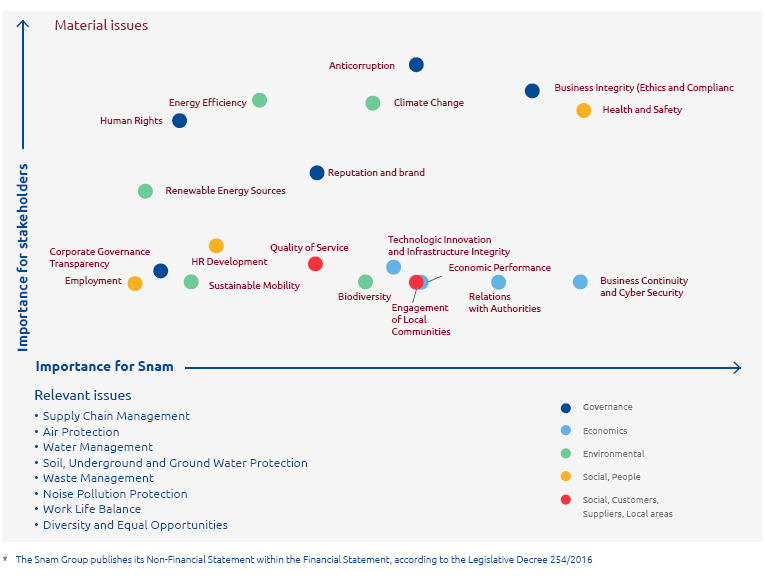Materiality analysis
Materiality is the principle of reference to better focus the reporting of activities on sustainability issues that best reflect the organization’s economic, environmental and social impacts or that influence stakeholders’ decisions.
The Global Reporting Initiative (GRI) and the International Integrated Reporting Committee (IIRC) have repeatedly proposed materiality, and the analysis thereof, as a starting point necessary to bring reporting in line with the stakeholder expectations. On this matter, Directive 2014/95/EU, transposed in Italy by the Legislative Decree 254/2016, also requires institutions/companies, that fall within the purview of the Decree, to apply this approach*.
At the end of 2017, Snam began an activity to update the topics that historically fell within the scope of sustainability, to focus on the more relevant ones.
In particular, the analysis began with identifying the issues reported in the main sustainability guidelines (ISO 26000 and GRI SDGs), which are considered representative of the external point of view identified during multi-stakeholder debates and discussions at an international level. These issues were subsequently given some context with respect to the Snam’s main businesses, benchmarking with the main peer companies at a national and international level, and through the requests received by the major ESG rating agencies.
To define those which are most significant, we proceeded to analyse the issues both from the company’s and from the stakeholders’ perspective (including the company’s employees), through a special on-line survey.
The joint consideration of internal and external significance of each single issue led to the identification of the priority and materiality areas.
Materiality matrix
